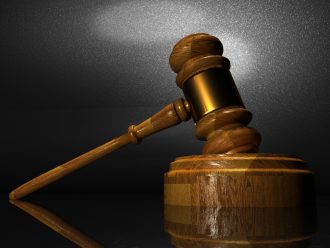
September 21, 2017
Corroboration of the Inventor is Necessary, but Evaluated Under a Rule of Reason, Considering the Totality of the Circumstances
In NFC Technology, LLC v. Matal, [2016-1808] (September 20, 2017), the Federal Circuit reversed the PTAB’s final written decision that claims of U.S. Patent 6,700,551 were obvious, and remanded for the board to determine whether NFC presented sufficient evidence that the prototype embodied the claimed invention.
The Board rejected NFC’s attempt to antedate the prior art with a prototype embodying the claimed invention before the priority date of the prior art. The Board held that even assuming that the prototype embodied the invention, NFC had not adequately established that a third party’s fabrication of the prototype inured to NFC’s benefit.
The Federal Circuit said that an inventor’s testimony, standing alone, is insufficient to prove conception — some form of corroboration must be shown. However, there is no particular formula that an inventor must follow in providing corroboration of conception. Corroboration is determined by a “rule of reason” analysis, in which an evaluation of all pertinent evidence must be made so that a sound determination of the credibility of the inventor’s story may be reached.
The Federal Circuit found that when taken as a whole, the documents corroborate inventor Bruno Charrat’s account of conception. While the Board was unpersuaded that NFC had provided sufficient evidence to demonstrate that the prototype was produced according to the inventor’s design, the Federal Circuit found that corroboration of every factual issue contested by the parties is not a requirement of the law. The Federal Circuit concluded that on the fact, particularly considering the amount of time that has passed, the inventor’s account was adequately corroborated.
The Federal Circuit noted that the Board’s analysis raised the question of who, if not the inventor, designed the prototype — the named inventor is the only source identified by the evidence for the design of the prototype. There was no record evidence of any other employee communicating with the fabricator. The Federal Circuit concluded that under the rule of reason, the totality of the evidence establishes the credibility of the inventor’s account. Thus, the Board erred in concluding that NFC had not submitted adequate evidence of conception, and in finding that the inventor’s account was not adequately corroborated.
The Federal Circuit remanded, however, so that the Board could determine whether the prototype embodied the claimed invention.



































